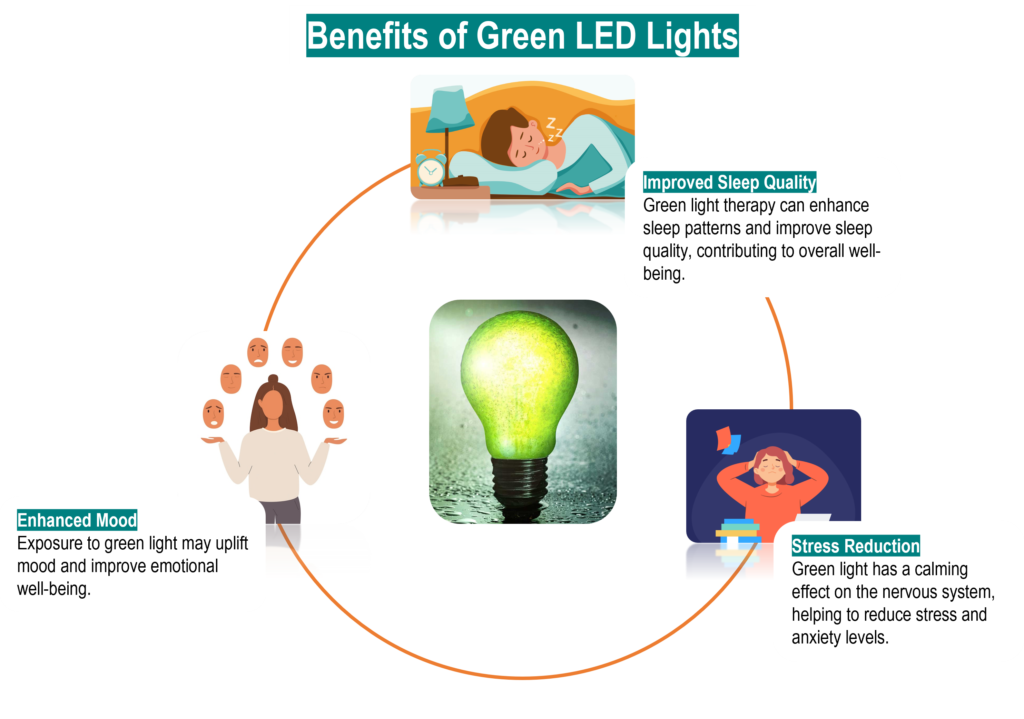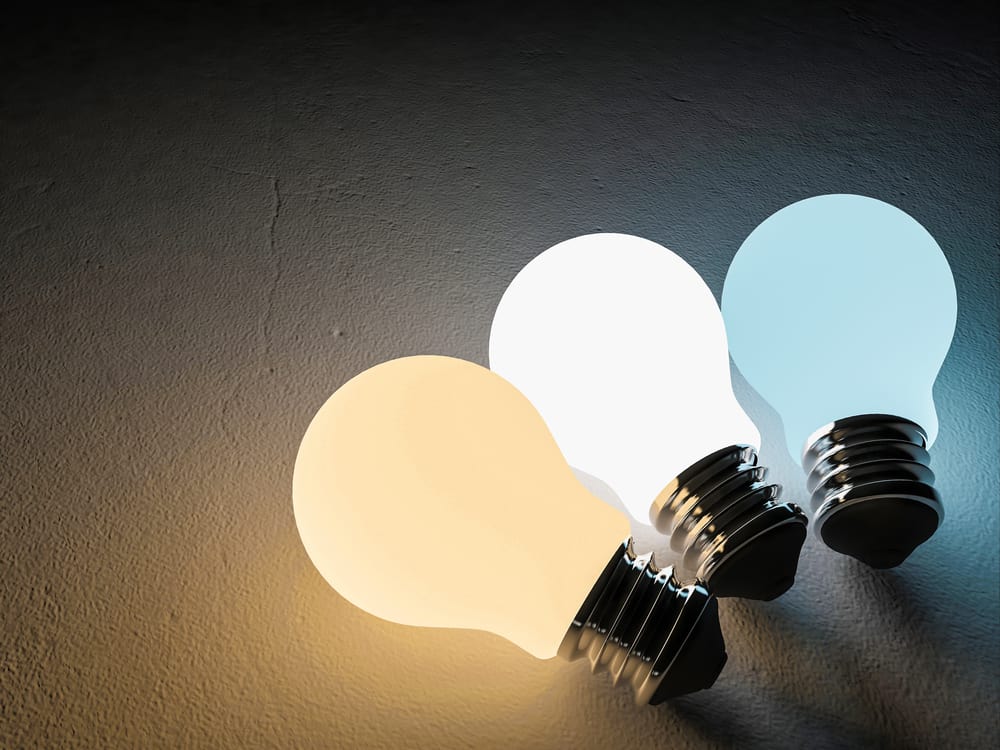In a world where innovation shines bright, Light-Emitting Diodes (LEDs) have emerged as the beacon of energy-efficient illumination, forever changing the way we light up our surroundings. From homes to cityscapes, from handheld devices to giant billboards, the power and efficiency of LEDs have revolutionized the way we perceive and utilize light. This comprehensive exploration into the world of LEDs will illuminate the science, technology, and countless applications that make them the cornerstones of modern lighting solutions.
Decoding the Acronym: What Does LED Stand For?
LED stands for “Light-Emitting Diode,” a semiconductor device that harnesses the power of electrons to create light. Unlike traditional incandescent bulbs that rely on heat to generate light, LEDs operate through the movement of electrons in a semiconductor material, converting electrical energy directly into radiant illumination.
In the grand tapestry of technological progress, few advancements have revolutionized the way we illuminate our world as profoundly as Light Emitting Diodes, or LEDs. These tiny, yet incredibly powerful semiconductors have redefined the very essence of lighting, offering not only remarkable energy efficiency but also a spectrum of possibilities in design, color, and functionality. To truly appreciate this marvel, let’s embark on a journey through the definition, historical evolution, and the transformative shift from traditional bulbs to the radiant glow of LEDs.
Defining LED Lights
At its core, an LED is a semiconductor device that emits light when an electric current passes through it. Unlike incandescent or fluorescent bulbs, which rely on heating a filament or ionizing gas, LEDs operate on a fundamentally different principle. When electrons flow across the semiconductor material, they release energy in the form of photons, producing light. This unique process not only consumes significantly less energy but also allows for precise control over color and intensity.
A Glimpse into LED’s Historical Evolution
The roots of LED technology can be traced back to the early 20th century when British scientist H.J. Round observed electroluminescence, a phenomenon where certain materials emit light when an electric current is applied. However, it wasn’t until 1962 that the first practical LED was developed by Nick Holonyak Jr., an engineer at General Electric. Holonyak’s creation, a red LED, marked a significant milestone in lighting technology.
Over the subsequent decades, LED technology underwent rapid advancements. Scientists and engineers experimented with various semiconductor materials, leading to the introduction of new colors and higher efficiencies. In the 1990s, blue LEDs emerged, paving the way for white light production through a process known as phosphor conversion. This breakthrough opened up new possibilities for widespread lighting applications.
The Transition: From Filaments to Semiconductors
The shift from traditional incandescent and fluorescent bulbs to LEDs represents a monumental leap in lighting technology. Traditional bulbs operate on principles that have remained largely unchanged since their invention in the late 19th century. Incandescent bulbs produce light by heating a wire filament until it glows, a process that is highly inefficient as a significant portion of energy is lost as heat. On the other hand, fluorescent bulbs use a gas discharge and phosphor coating to produce light, but they still fall short in terms of energy efficiency and lifespan.
In stark contrast, LEDs operate on solid-state technology, a foundation that lends itself to incredible efficiency and longevity. By eliminating the need for heating elements or ionized gases, LEDs can convert a much larger portion of electrical energy into visible light. This translates into lower energy consumption, reduced environmental impact, and a significantly extended lifespan.
Furthermore, LEDs offer unparalleled versatility. The ability to control the intensity and color of light with precision has paved the way for dynamic lighting solutions in various industries. From customizable home lighting to intricate display screens, LEDs have become the cornerstone of modern illumination.
Looking Forward: The Promise of LED Technology
As we stand on the precipice of a new era in lighting, the trajectory of LED technology points towards even greater innovation. Ongoing research aims to enhance efficiency, develop new materials, and explore applications in areas such as horticulture, healthcare, and beyond.
A Symphony of Science and Luminescence: How Do LEDs Work?
At the core of LED technology lies a captivating phenomenon known as electroluminescence. When a voltage is applied across a semiconductor material, it propels electrons into higher energy levels. As these electrons return to their original state, they emit photons—the building blocks of light. This process, highly efficient and almost entirely devoid of heat production, gives LEDs their characteristic brilliance.
Enduring Brilliance: The Lifetime of LED Lighting Products
Among the most remarkable traits of LEDs is their extended lifespan. LEDs can endure significantly longer than conventional lighting sources, boasting lifetimes ranging from tens of thousands to hundreds of thousands of hours. This extended durability not only translates into reduced maintenance costs but also contributes to a more sustainable future by minimizing the need for frequent replacements.
Where to Illuminate: Discovering the Versatility of LED Bulbs
The versatility of LED bulbs knows no bounds. From the cozy corners of homes to the grand stages of stadiums, LEDs have infiltrated every conceivable lighting domain. Their adaptable nature and energy efficiency make them ideal for an array of applications, from subtle accent lighting to powerful area illumination.
Defying the Heat: LEDs and Their Relationship with Temperature
While the energy efficiency of LEDs is unquestionable, they are sensitive to temperature fluctuations. Elevated temperatures can affect their performance and longevity. Ingenious thermal management techniques, such as heat sinks and advanced materials, have been employed to safeguard LEDs against the adverse effects of heat, ensuring their optimal operation.

The Dawn of a New Era: How LED Lighting Differs
LED lighting sets itself apart from traditional lighting technologies in myriad ways. Its energy efficiency is unrivaled, producing more light output per unit of energy consumed. Its compact size allows for unprecedented design flexibility, enabling the creation of sleek and innovative lighting fixtures. Moreover, LEDs offer instant illumination without the gradual warm-up time associated with conventional bulbs.
Unveiling the Spectrum: Application of the Technical Details
The technical intricacies of LED lighting extend far beyond the laboratory. They find real-world applications in virtually every facet of modern life. From producing efficient white light to enabling dynamic color-changing capabilities, LEDs provide dynamic solutions to an extensive array of lighting needs.
From Humble Beginnings to Modern Marvels: The Evolution of LED Technology
The journey of LEDs from humble beginnings to their current state of technological marvel showcases the rapid pace of advancement. As materials, designs, and manufacturing techniques evolve, LEDs continue to redefine the boundaries of lighting possibilities.
Colorful Radiance: Exploring White Light LEDs and Color-Changing Capabilities
The innovation of white light LEDs has revolutionized lighting design. With the ability to precisely control color temperature, these LEDs can effortlessly transition from warm and cozy to cool and clinical lighting atmospheres. Furthermore, color-changing LEDs have unlocked a new realm of possibilities, allowing spaces to transform at the touch of a button, creating ambiance and setting moods with astonishing ease.
Powering the Glow: Unraveling the Role of LED Drivers
The orchestration of LED brilliance is made possible by a key player: the LED driver. This electronic component regulates the flow of electrical current to LEDs, ensuring their performance remains optimal and consistent. By providing the right balance of current and voltage, LED drivers play an indispensable role in maintaining the longevity and efficiency of LEDs.
Keeping Cool Under Pressure: Thermal Management of High-Power LEDs
As LED technology continues to evolve, power levels increase, and effective thermal management becomes paramount. Advanced cooling methods, such as intricate heat sink designs and conductive materials, dissipate excess heat and maintain LED performance at peak levels.
Illuminating the Diminishing Returns: Understanding the Decrease in Luminous Efficacy
Like all technologies, LEDs exhibit a natural decrease in luminous efficacy over time. This phenomenon, known as “lumen depreciation,” is a characteristic of all lighting sources but can be managed effectively through thoughtful design and meticulous thermal management.
Shaping the Future: The Multifaceted Applications of LEDs
The canvas of LED applications is vast and varied. From the cozy warmth of household lighting to the precision of industrial settings, from vibrant entertainment venues to serene outdoor landscapes, LEDs have proven their adaptability and versatility.
A Glimpse into Homes of the Future: Household LED Lamps
The heart of LED adoption lies within our homes. LED lamps have become indispensable fixtures, offering not only energy-efficient lighting solutions but also the ability to shape ambiance and create comfortable living spaces.
From Micro to Macro: Unveiling LED Sizes and Bases
LEDs come in an array of sizes and bases, ensuring compatibility with a wide variety of fixtures and lighting setups. This versatility ensures a seamless integration into existing environments while providing ample room for creative lighting designs.
Bringing Light to the Workspace: LED Tube Lamps
In office spaces and commercial environments, LED tube lamps have transformed the way we illuminate our work areas. Replacing traditional fluorescent tubes, LED tubes offer superior light quality, energy efficiency, and a longer lifespan, ultimately reducing maintenance and operational costs.
Designing with Precision: Tailoring Lighting for LEDs
The unique qualities of LED lighting have sparked a revolution in lighting design. Architects and designers wield LED technology to craft spaces with light, using illumination as an artistic medium to sculpt environments and create experiences that were previously unattainable.
Guiding the Night: The Brilliance of Outdoor LED Lighting
Outdoor spaces benefit immensely from the advantages of LEDs. From streetlights that enhance safety and visibility to landscape lighting that transforms the nocturnal landscape into a magical realm, LEDs provide the perfect blend of functionality and aesthetics.
Illuminating the Green Path: Energy Star LED Qualifications
The Energy Star label adorning LED products assures consumers that these products adhere to stringent efficiency and quality standards. Opting for Energy Star-certified LEDs not only conserves energy but also contributes to environmental sustainability by reducing carbon footprints.
Limits of Brilliance: Exploring LED Limitations
While LEDs offer a plethora of advantages, they do have limitations. From initial costs that might be higher than traditional lighting options to potential inconsistencies in color and quality, understanding these limitations is vital in making informed decisions.
A Comparative Perspective: LED vs. Other Lighting Technologies
The advent of LEDs has catalyzed a shift in the lighting landscape, prompting comparisons with traditional lighting technologies such as incandescent and fluorescent lighting. The superiority of LEDs in terms of energy efficiency, lifespan, and environmental impact is increasingly evident, further solidifying their place as the future of illumination.
In a world that thrives on innovation, LEDs stand as a testament to human ingenuity and scientific discovery. From laboratories to our daily lives, these remarkable devices have elevated the way we illuminate our world. As we continue to explore their potential and push the boundaries of lighting design, we pave the way for a brighter, more sustainable future—one where the brilliance of LEDs shines as a beacon of progress and possibility.
Is LED Lights Good for Eyes? Myths and Facts

Relieving Migraines with LED Lights

Right Light for Watching TV and Avoiding Headaches


